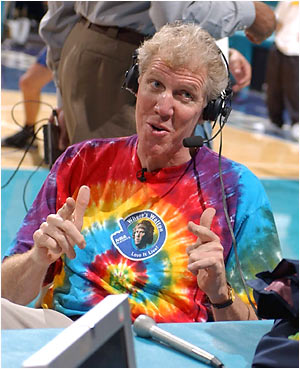
The Clarks Wallabee has been a staple of fashion and comfort since it’s introduction in 1965. Each generation since has adopted its minimalist silhouette and smooth lines as their own. It is considered the world’s first comfort shoe, a boot specifically designed with the shape and fall of the foot in mind. From flower toting hippies to hip-hop moguls, the shoe’s sophistication continues to be praised and flaunted. And to think it was almost called the Grasshopper.
The hallowed ground of this shoe’s beginning is Walheim, a town in former West Germany. Here in the early 1960s, a shoe company named Sioux Schuhfabrikem developed a moccasin-type boot that caught the eye of Lance Clark, the then Export Manager for Clarks Overseas Shoes in Europe and the great-great-great-grandson of Cyrus Clark, the founder of Clarks Shoes back in 1825. Clark negotiated a deal with the company to allow Clarks to manufacture the shoe, called the Grasshopper. The specifications and patterns for the Grasshopper were sent to the Clarks Company Padmore and Barnes factory in Ireland (Padmore and Barnes was under Clarks ownership from 1957 until 1987 and did most of their UK manufacturing during that time). In exchange for the design, Sioux Schuhfabrikem would collect royalties.

The beginning of the Wallabee was a rough one. Then still called the Grasshopper (most likely the problem), the shoe was first pushed out in Britain and Ireland to a resounding flop. No one was buying Grasshoppers. A part of the problem was that this new model shoe was still in the shadow of another Clarks juggernaut, the Desert Boot (released in 1950). The fact that this newer model (the Grasshopper) featured unseen innovation, like what is called a nature-formed last—the mold of the shoe is created around the shape of your foot and allows for comfortable toe spread—and that the crape sole was now being vulcanized to the leather instead of glued, didn’t seem to catch anyone’s fancy. Much to the disappointment of the Clark family, it seemed the Grasshopper was a failure.
In a last ditch effort the shoe was marketed to America in 1967. Clark ran into issues immediately in trying to bring the shoe Stateside. The name “Grasshopper” was already registered at that time. While one can only speculate that it had something to do with all of his trans-Atlantic flights, Lance Clark came up with the name Wallabee. Almost instantly, the shoe was a hit.
The first years in America set the tone of shoe forever. Both sides of the Vietnam War, for and against, found themselves gravitating toward the Wallabee. First and foremost, the comfort was supreme. The crape sole, or cheese bottoms as their called in Jamaica, cushioned like nothing else offered. There was the Clarks Desert Boot, which had been in the country for some time at this point, but the Desert Boot only offered about a half inch of “cheese” on its sole. The heel on the original wallys was over an inch thick in places. Then there was the stitching. The curved lip could be dressed up and formal, therefore appealing to the more traditional folks. But its simplicity could also be seen as rugged, a modern moccasin for the young. In addition, the leather and/or suede styles were easily dyed and allowed for customization, something that is still happening today. This ability to suffice an entire spectrum of ideals and fashion sense is where the Wallabee excelled. But the side that most likely made the shoe the most visible was the anti-war movement. Flower power and wallys seemed to go together like bread and butter. And before you know it, shoe sales picked up in Britain and Ireland. By the mid-1970s, Italy and France were boasting some of the largest sales. Then in the late ‘80s another resurgence happened here in America.

Most of my generation (eighties babies) was introduced to the wally through hip-hop. The likes of the Wu-Tang Clan (specifically Ghostface Killah), Nas, and Digable Planets all bragged on their crape-soled Clarks. It conveyed a knowledge only a few seemed to know about. At the time, the shoes anyone cared about were limited to three or four brands: Nike, Reebok, Adidas, Puma. You would mention wanting Clarks for your birthday or Christmas and your parents would respond, “Aren’t those old-man shoes?” or “You about to work in a nursing home?” The fact was Wallabees were preppy yet brawny, sophisticated and ruffianly. Worn with a pair of baggy jeans, they were eye-catching, almost out of place. Hip-hop is hard. Hip-hop is playing basketball in Timberlands. But the wally conveyed the ruggedness of a Timbo with the comfort of a casual shoe. A contradiction in shoe form that fit perfect with the contradiction that is hip-hop.

Now-a-days, the wally can still be seen on all walks of life and fashion. From the hipster’s dingy tan suede pair to the crispy-clean brown leather pair worn by some big wig on weekend vacation in the Hamptons. From West Germany to Staten Island, the Wallabee continues to bring an individual design and supreme comfort to all walks of life. Let’s hope it never stops.





